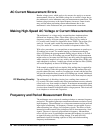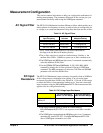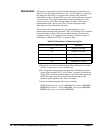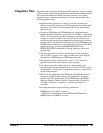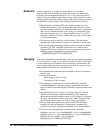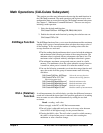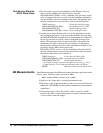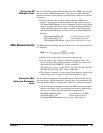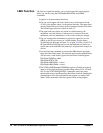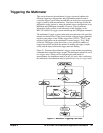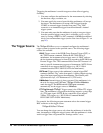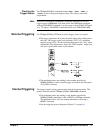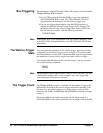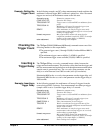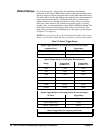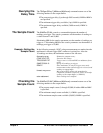
44 HP E1312A/E1412A Multimeter Application Information Chapter 2
LIMit Function The limit test operation enables you to perform pass/fail testing against
limits you specify using the
CALCulate:LIMit:UPPer and LOWer
commands.
• Applies to all measurement functions.
• You can set the upper and lower limits to any value between 0 and
±
120% of the highest range, for the present function. The upper limit
selected should always be a more positive number than the lower limit.
The default upper and lower limits are both “0”.
• The upper and lower limits are stored in volatile memory; the
multimeter sets both limits to 0 when power is removed from the
multimeter, after the multimeter is reset or after a function change.
• You can configure the multimeter to generate a request for service
(SRQ) on the first occurrence of a failed reading. See the Status
System Register Diagram in Figure 3-1 on page 154. Bits 11 and 12 of
the Questionable Data Register provide the high and low limit error
signals that can be enabled in the status byte to generate the request for
service.
• Use the following commands to activate the LIMit function and input
upper and lower limit values. The calculate state must be enabled before
you can store a value in the Upper Limit and Lower Limit Registers.
CALCulate:FUNCtion LIMit
CALCulate:STATe ON
CALCulate:LIMit:UPPer <
value>
CALCulate:LIMit:LOWer <
value>
• The STATus:QUEStionable:CONDition register will indicate when an
upper or lower limit has been exceeded failing either a HI or LO limit
test. Use the
STAT:QUES[:EVEN]? command to query the status
questionable register and determine what failure occurred. Sending this
command also clears the questionable data register (or send a Clear
Status
*CLS command to clear the register before testing begins).



